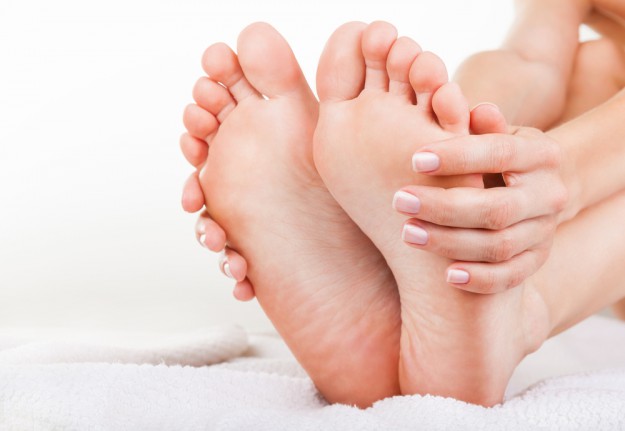Foot Notes: What do your feet say about your health?
Feet don’t lie. Keeping an eye on the health of your trotters can help you catch undiagnosed medical conditions you might otherwise not notice.
Your eyes may be a window to your soul but when it comes to your inner health, it’s best to look a little further down… at your feet. Whether you’re young, old, healthy or otherwise, your feet are a reflection of your overall wellbeing. You can detect everything from heart diseases to diabetes and cancer just by looking at those lowly two. Why? Because the feet, being the lowest part of the body have the longest nerves and arteries that link all the way to the heart, spine and brain, making them your body’s early warning system.
Want to make a quick check on the state of your health? Keep reading to find out if your feet are trying to tell you something.
SWOLLEN FEET
Swollen feet are an indication of cardiovascular problems. When your heart has problems pumping fluid, gravity pulls it down to your feet, clogging the tissues and arteries which then results in swollen feet.
Diabetes is another cause of swollen feet. The extra sugar in your blood damages tissues and nerves, making it hard for the heart to efficiently pump blood to every part of your body, and with your feet being the last part to get blood, it’ll start reacting by swelling up.
DRY, FLAKY SKIN
Dry skin doesn’t immediately suggest a severe illness. It could mean you have an allergic reaction to something you ate or that you have athlete’s foot. However, if the symptom persists, it could be a sign of a condition known as autonomic neuropathy, where the nerves that carry information from the brain to the heart, sweat glands and blood vessels have become damaged. This will affect blood pressure, temperature control digestion and even bladder function. Mostly, people who suffer from diabetes are prone to getting dry flaky skin on their feet, but there are exceptions to the rule.
DARK SPOTS
It’s time to pay a visit to the doctors if you notice dark spots around your feet. You may dismiss them as aging spots, but these patches of discolouration are actually an early sign of melanoma, a deadly form of skin cancer. Melanoma that occurs in the foot often goes unnoticed during its earliest stage, when it is easily treatable. It’s important to be vigilant and report any signs of change in your feet before it’s too late.
ULCERS
Ulcers that never seem to heal are one of the earliest signs of diabetes. Those who suffer from the condition have high glucose levels, which often leads to sluggish blood. Less oxygen reaches the nerves in the feet when there’s too much glucose in the blood, which is what is needed to stimulate circulation and heal the sores. Also, diabetics are less able to produce the white blood cells needed to fight off infection, which is why the ulcers don’t stand a chance to recover.
DISCOLOURED FEET
Feet that aren’t the same shade as the rest of your body could be an indication of poor blood circulation. Feet with a bluish tinge are a side effect of smoking. This is because nicotine narrows down the arteries in the legs and feet, making it difficult for blood and oxygen to reach those areas.
DAMAGED NAILS
All the pedicures in the world can’t seem to hide your ugly nails….maybe it’s time to stop treating the symptoms and find out the root cause of your unsightly toe nails. Skin conditions like eczema and psoriasis manifest in ridged or pitted nails and if you have raised strips running across your nails, that’s an indication of Raynaud’s Disease, a circulatory problem which causes small arteries in the toes to go into spasms.
RED/SWOLLEN TOES
If your big toe is red or looking like it’s about to burst, you might be suffering from gout, a painful form of arthritis that occurs when acids from foods like peas, beans and anchovies build up in the body. Other known conditions include kidney disorder or an underactive thyroid.
Karen George




